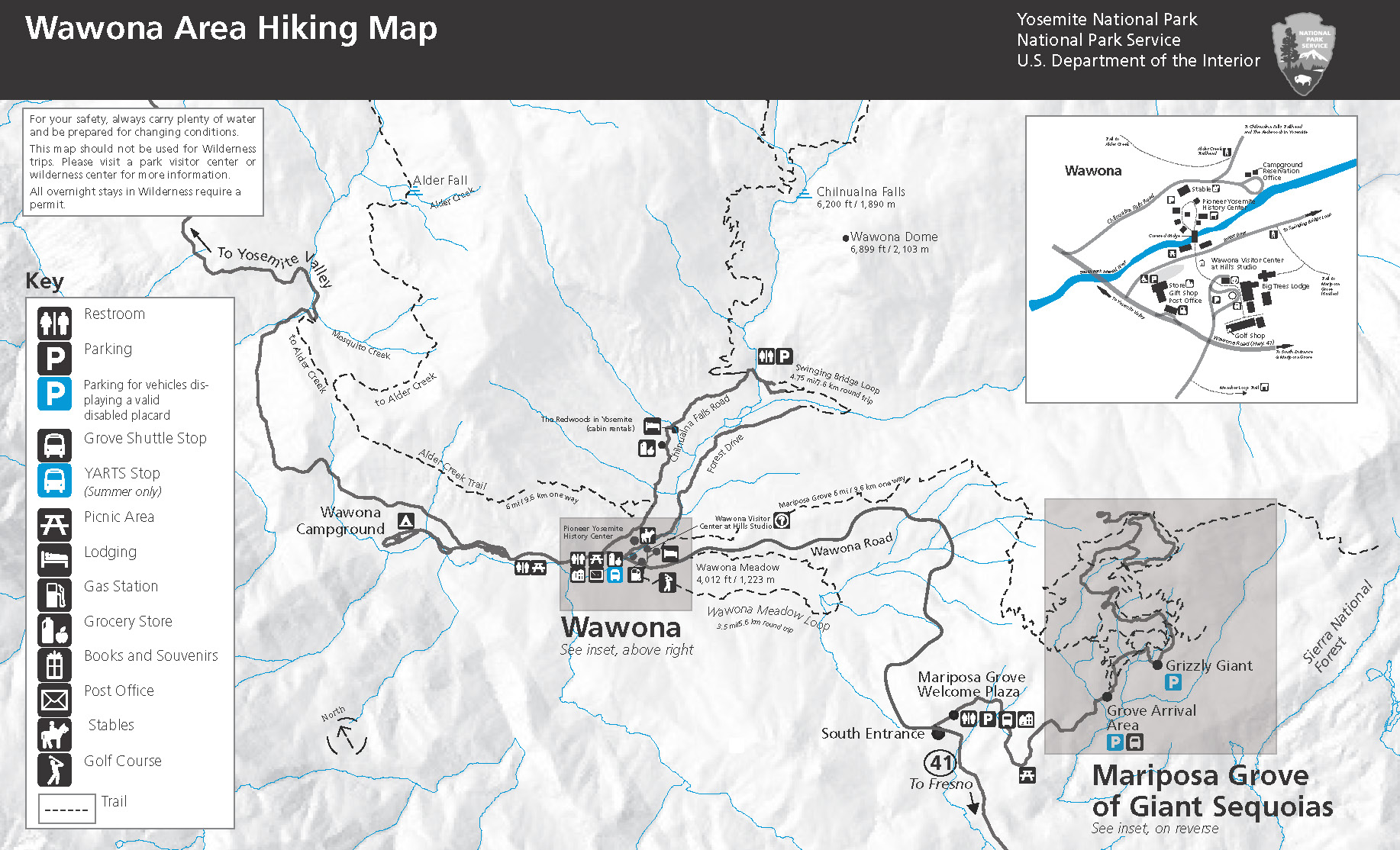

Just a few years after the Mariposa Battalion entered Yosemite Valley in 1851, both tourists and scientists began arriving. But it wasn’t an easy journey. Before the Model T was even a twinkle in Henry Ford’s eye, people would set sail from San Francisco and arrive in Stockton. From there, it was a long and dusty stage ride up to Yosemite Valley. Have you ever wondered what it must’ve felt like at that time? Well, you can catch a glimpse of this experience by visiting the cozy hamlet of Wawona.

Please note The Wawona Hotel is closed for extensive restoration, there is no projected opening date at this time.
Back when the first adventurous spirits laid eyes on Yosemite, modern comforts were already beginning to arrive in the “campus” of Wawona. The jewel being the historic Wawona Hotel. The first cabin to welcome guests was established in 1856 and the first of the current hotel structures was built a little later, in 1976. Over the following decades, six additional buildings were added to accommodate the increasing number of visitors arriving via stagecoaches on their way to Yosemite. Still a hotel today, as well as one of five national historic landmarks of Yosemite, even if you don’t stay here, we suggest at least making an effort to enjoy a meal.
Literally a stone’s throw from the Wawona Hotel you’ll find the Yosemite History Center. To say that it’s an assembled collection of historic buildings doesn’t do it justice. To enter the historic village, enjoy a stroll through the Wawona Covered Bridge. Spanning the south fork of the Merced River, it was built in 1857 and the only way into Yosemite until 1937. This is when a new bridge was built 660 feet to the southwest.
 Walking through the Wawona Covered Bridge - photo by Local Freshies
Walking through the Wawona Covered Bridge - photo by Local Freshies
Originally situated on the banks of the Merced River near Sentinel Bridge Valley. Artists such as Christian played a key role in helping people from around the world learn about Yosemite Valley and thus conserve it for future generations.

Photo Credit: The Redwoods In Yosemite
This was the hub for visitors to Yosemite Valley for years. A place where visitors could book lodging, restock supplies, get repairs (much needed due to the long and arduous journey), make long distance phone calls, and send telegrams.

As most of us would expect, buildings are typically used for more than one thing. In one decade, it could be a bar while in another a vet clinic. A great example of this is the Chinese Laundry Building at Wawona built in 1917. Originally marked as the “Carriage House”, it’s now being rededicated for its principal use – the Chinese Laundry Building which serviced the Wawona Hotel. The goal is to showcase the importance of Chinese American contributions to the Yosemite story. (Photos by Lisa Cesaro)

It was during the summer of 1900 that a steam powered “Locomobile” became the first automobile to enter Yosemite National Park. Prior (and for a time after that) traveling by stagecoach was the way that many made their way over the roads (or prior to 1870... really just trails) into Yosemite Valley. The old roads are largely gone now, or thoroughly modernized (i.e. rerouted and paved over...), but you can see some examples of the early transportation history right here in Wawona. Sheltered in a large barn is found Yosemite’s collection of vintage stagecoaches. Seeing the various versions that made the journey will help you appreciate modern suspension. One can only imagine how rough of a ride it must’ve been to take one of these.
 Stagecoach in front of the Wawona Hotel - courtesy of the Yosemite Archives
Stagecoach in front of the Wawona Hotel - courtesy of the Yosemite Archives
 The Wawona Meadow - photo by Local Freshies
The Wawona Meadow - photo by Local Freshies
If you’ve been cooped up in the car all day seeing Yosemite, we suggest heading across the street to stretch your legs. The nearly flat loop itself is about five miles long. And even on the busiest days in Yosemite, you’ll be rewarded by a very peaceful experience. In the spring, the Wawona Meadow is a treasure trove of wildflowers. Come fall, you’ll be gifted to a beautiful firework’s display of dogwoods bursting in crimson reds. The Wawona Loop Trail is also one of the very few un-improved trails in Yosemite that you can share with your canine friend (check out Are dogs allowed in Yosemite? for more on info where and how pets can experience Yosemite).
The Meadow Loop Trail is just one of many hiking opportunities in and around Wawona. More many can be found in the Yosemite National Park - Wawona Area Hiking Map.

The mighty granite walls of Yosemite Valley may be the reason to visit, but we suggest slowing down your journey and exploring Wawona. You’ll come away with a deeper appreciation of how easy it is today to see the natural wonders that exist within its boundaries.
______________________________________________________________________________________
Like what you see? Save any of these pins (or possibly all of them) to your travel planning board(s) to give you an easy way to find your way back here! Also check out our other travel stories/blog posts as well as itineraries for more ideas and pins!
Alex founded localfreshies.com® in 2014 to be the #1 website providing the “local scoop” on where to eat, drink & play in mountain towns throughout North America. When he’s not writing and executing marketing strategies for small businesses & agencies, he’s in search of the deepest snow in the winter and tackiest dirt in the summer.